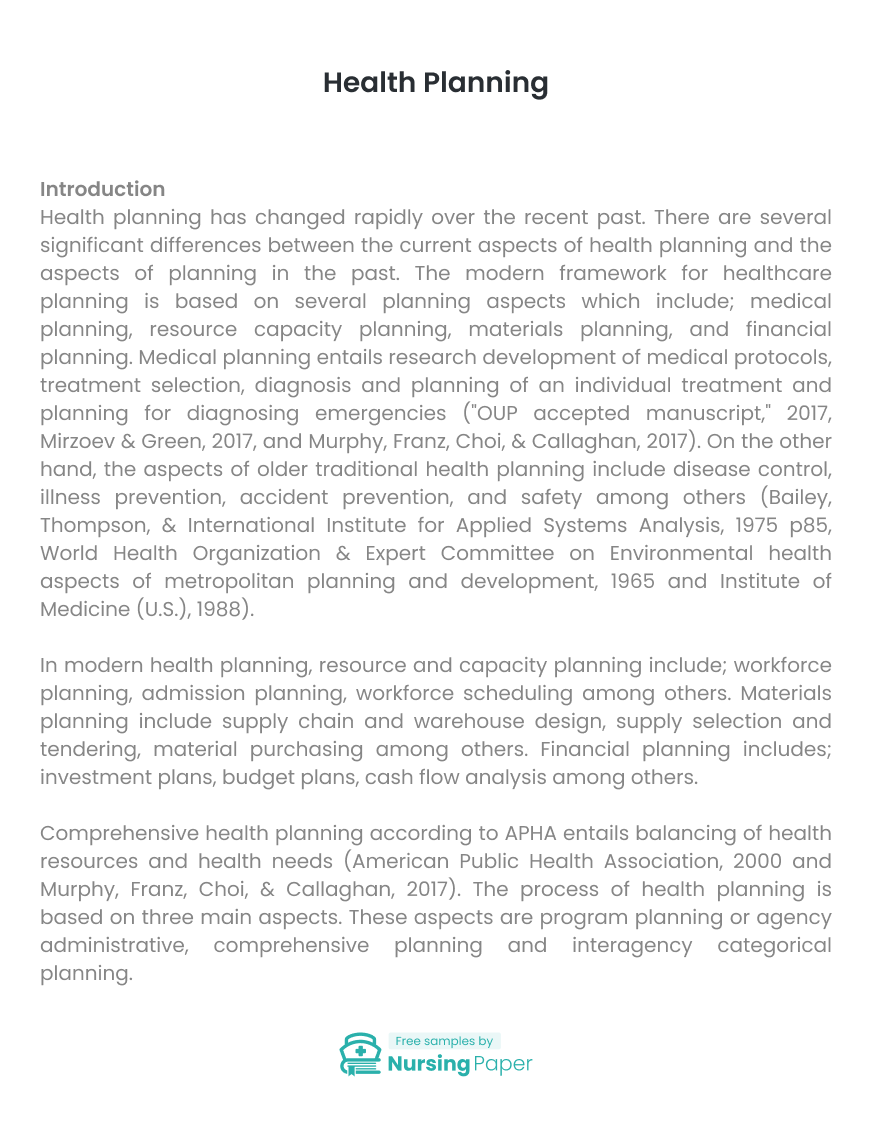1. American Public Health Association. (2000). APHA advocates’ handbook: A guide for effective public health advocacy. Washington, DC: The Association.
2. Bailey, N. T., Thompson, M. S., & International Institute for Applied Systems Analysis. (1975). Systems aspects of health planning: Proceedings of the IIASA conference, Baden, Austria, August 20-22, 1974. Amsterdam: North-Holland Pub. Co.
3. Evensky, H. (1990). Planning for long-term health care. Boston: Houghton Mifflin Co.
4. Institute of Medicine (U.S.). (1988). The future of public health. Washington, DC: National Academy Press.
5. Mirzoev, T. N., & Green, A. T. (2017). Planning, for Public Health Policy. International Encyclopedia of Public Health, 489-499. doi:10.1016/b978-0-12-803678-5.00333-7
6. Mood, E. W., American Public Health Association, & Centers for Disease Control (U.S.). (1986). APHA– CDC recommended minimum housing standards. Washington, DC: American Public Health Association.
7. Murphy, J. W., Franz, B. A., Choi, J. M., & Callaghan, K. A. (2017). Narrative Medicine and Community-Based Health Care and Planning.
8. National Institute of Mental Health (U.S.), National Institute of Mental Health (U.S.), & Center for Mental Health Services (U.S.), National Institute of Mental Health (U.S.). (1983). Mental health, United States. Rockville, MD: U.S. Dept. of Health and Human Services, Public Health Service, Alcohol, Drug Abuse, and Mental Health Administration, National Institute of Mental Health, Division of Biometry and Epidemiology.
9. OUP accepted manuscript. (2017). Health Policy and Planning. doi:10.1093/heapol/czx135
10. World Health Organization, & Expert Committee on Environmental health aspects of metropolitan planning and development. (1965). Environmental health aspects of metropolitan planning and development: Report of a WHO expert committee. Geneva: WHO.

The download will start shortly.



 Subject:
Subject:
 Number of pages: 3
Number of pages: 3